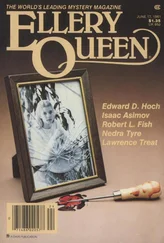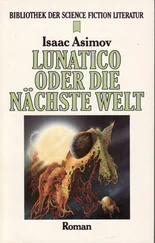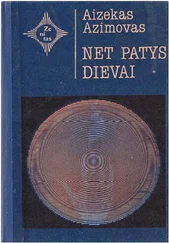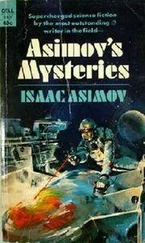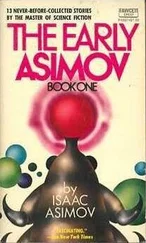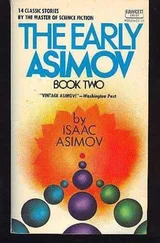Isaac Asimov - Asimov’s Guide To Shakespear. Volume 1
Здесь есть возможность читать онлайн «Isaac Asimov - Asimov’s Guide To Shakespear. Volume 1» весь текст электронной книги совершенно бесплатно (целиком полную версию без сокращений). В некоторых случаях можно слушать аудио, скачать через торрент в формате fb2 и присутствует краткое содержание. Жанр: Культурология, на английском языке. Описание произведения, (предисловие) а так же отзывы посетителей доступны на портале библиотеки ЛибКат.
- Название:Asimov’s Guide To Shakespear. Volume 1
- Автор:
- Жанр:
- Год:неизвестен
- ISBN:нет данных
- Рейтинг книги:4 / 5. Голосов: 1
-
Избранное:Добавить в избранное
- Отзывы:
-
Ваша оценка:
- 80
- 1
- 2
- 3
- 4
- 5
Asimov’s Guide To Shakespear. Volume 1: краткое содержание, описание и аннотация
Предлагаем к чтению аннотацию, описание, краткое содержание или предисловие (зависит от того, что написал сам автор книги «Asimov’s Guide To Shakespear. Volume 1»). Если вы не нашли необходимую информацию о книге — напишите в комментариях, мы постараемся отыскать её.
Asimov’s Guide To Shakespear. Volume 1 — читать онлайн бесплатно полную книгу (весь текст) целиком
Ниже представлен текст книги, разбитый по страницам. Система сохранения места последней прочитанной страницы, позволяет с удобством читать онлайн бесплатно книгу «Asimov’s Guide To Shakespear. Volume 1», без необходимости каждый раз заново искать на чём Вы остановились. Поставьте закладку, и сможете в любой момент перейти на страницу, на которой закончили чтение.
Интервал:
Закладка:
The comment of Antipholus of Syracuse would seem to refer to Finland rather than Lapland, for Finnish mythology is unusual in the emphasis it places on song and magic. Their heroes are magicians rather than strong men, Merlin rather than Hercules. The most famous Finnish literary work is their national epic, the Kalevala, which is pre-Christian in inspiration and the hero of which is the singing magician Wainamoinen.
Satan, avoid,..
The apparent enchantments continue. Dromio of Syracuse comes panting in with the money given him by Adriana to bail Antipholus of Ephesus. Dromio of Syracuse hands it to Antipholus of Syracuse, who naturally doesn't know what it is. He asks about the ship instead and Dromio of Syracuse insists he has already given him that news.
In comes the courtesan to whom Antipholus of Ephesus has promised the chain. She sees it around the neck of Antipholus of Syracuse and asks for it. Antipholus answers violently:
Satan, avoid! I charge thee, tempt me not!
—Act IV, scene iii, line 49
The harassed Antipholus of Syracuse, already convinced he is the victim of witchcraft, is sure that the light wench is the devil himself come to tempt him to sin. The exclamation is a form of Jesus' reproof to Satan on the occasion of the temptation in the wilderness. Jesus is then quoted as saying "Get thee hence, Satan" (Matthew 4:10).
(When Shakespeare quotes the Bible, he cannot very well quote the exact wording of the King James version with which we ourselves are so familiar. That version was not published till 1611, some twenty years after The Comedy of Errors was written and nearly at the close of Shakespeare's writing career.)
The courtesan naturally decides he is mad and goes off to warn his wife.
… the kitchen vestal. ..
Meanwhile, Antipholus of Ephesus is still waiting for the bail which Dromio of Syracuse delivered to Antipholus of Syracuse. In comes Dromio of Ephesus with the rope that he had been sent for just before Antipholus of Ephesus had been arrested. Naturally he gets beaten.
Adriana and Luciana arrive now with the courtesan. With them they bring a schoolmaster, Mr. Pinch, whom they hope is wise enough to cure Antipholus of Ephesus of his madness. Antipholus of Ephesus, to whom it seems the rest of the world is mad, is driven to distraction by this.
He insists that, despite his wife's protestations, he had been barred from his own house at dinner. He calls on Dromio of Ephesus to confirm this and for once master and man are on the same side. When Antipholus of Ephesus points out that the very kitchenmaid railed at him, Dromio of Ephesus says:
Certes, she did; the kitchen vestal scorned you.
—Act IV, scene iv, line 76
The vestals were the Vestal Virgins (see page I-33) but this can scarcely be taken to mean that the kitchenmaid was a virgin. In Shakespeare's time, this was scarcely likely if she was over twelve. Apparently it is only a comically high-flown way of saying that she was in charge of the fire, as the vestals were in charge of the sacred fire.
… Circe's cup
But there is further trouble. Antipholus of Ephesus still wants to know where the bail money is and Luciana says she sent it. Dromio of Ephesus denies that he received it or that he was even sent for it, and Antipholus of Ephesus, in his rage, begins to act mad indeed. He and Dromio of Ephesus are seized and dragged away.
In come Antipholus of Syracuse and Dromio of Syracuse on their way to the waterfront. The Merchant, who has just had Antipholus of Ephesus arrested, sees him apparently at liberty, with the chain for which he was arrested openly around his neck. There is a fight and Antipholus of Syracuse and Dromio of Syracuse escape into a nearby abbey. The Abbess emerges and refuses to let anyone else enter.
But the day is coming to a close. (This play and The Tempest are the only two plays in which Shakespeare kept the action within the bounds of a single day in accordance with the Greek "unities"-see page I-158.) Egeon is being led to his death, since he has not been able to raise the thousand marks he has been fined. Adriana seizes the opportunity to accost the Duke of Ephesus and beg him to persuade the Abbess to release her poor, mad husband.
But Antipholus of Ephesus and Dromio of Ephesus have escaped from their own jailers and have come furiously on the scene. Antipholus of Ephesus demands justice against his wife, who, he claims, is conspiring to imprison him after having barred him from his own house.
The Duke, listening to the babble of confusing testimony from all sides, says:
Why, what an intricate impeach is this!
I think you all have drunk of Circe's cup.
—Act V, scene i, lines 270-71
Circe is the name of a sorceress who appears in the Odyssey. She lived on a Mediterranean island and had visitors drink wine from her cup. The drink would turn them into animals, who were then enslaved by her.
Ulysses' men, in the course of their return from fallen Troy, come to Circe's island, drink from her cup, and are changed into swine. Ulysses himself, with the help of an antidote supplied him by Mercury, overcomes her.
The Duke, by this reference to Circe's cup, implies that all about him have lost their ability to reason but are as confused as senseless beasts.
Egeon interrupts to say the man seeking redress is his son Antipholus. But it is Antipholus of Ephesus he indicates and that Antipholus at once denies any knowledge of Egeon. The Duke backs him up, saying he has known Antipholus of Ephesus all his life and that Antipholus has never been in Syracuse. (The Duke is as dull as the rest; he doesn't catch on either.)
It is only when the Abbess emerges with Antipholus of Syracuse and Dromio of Syracuse, and the two Antipholuses and Dromios face each other, that all is clear at last. The Abbess turns out, of course, to be Egeon's wife.
All the conflicting events of the day are sorted out; Egeon is liberated; and the play ends in utter happiness. It is even clear that Antipholus of Syracuse will marry Luciana so that the two brothers will also be brothers-in-law.
8. Pericles, Prince of Tyre
The date of this play is usually given as 1608, and the last three acts are characteristically late Shakespearean in style. The first two acts are, however, considered much inferior, and many critics feel that, except for a touch here and there, they were not written by Shakespeare.
Whether that is so or not, the play, as it stands, is included in the collections of Shakespeare's plays and, for better or worse, will forever bear his name.
… ancient Gower…
The play begins with an Introduction. An old man comes on stage and says:
To sing a song that old was sung,
From ashes ancient Gower is come,
—Act I, Introduction, lines 1-2
John Gower was a fourteenth-century English poet (c. 1330-1408) and a friend and contemporary of Chaucer's (see page I-54). Gower was considered by his contemporaries, though not by moderns, to have been almost Chaucer's equal, and though it might be thought they would have borne each other the ill will of competitors, they did not. They dedicated books to each other.
One of Gower's principal works is Confessio Amantis (Confession of a Lover), first published in 1383. In this work, a number of romances are told in English couplets. The tales are by no means original with Gower. What he does is retell stories from ancient and medieval sources, choosing the most popular ones.
In the eighth book of Confessio Amantis Gower tells a tale, taken from a Greek source, of which a version is presented in this play. A prose version of the same story, "The Pattern of Painful Adventures," was published in 1576 by Laurence Twine. Some scenes in Pericles are drawn from Twine, but Gower is the major influence.
Читать дальшеИнтервал:
Закладка:
Похожие книги на «Asimov’s Guide To Shakespear. Volume 1»
Представляем Вашему вниманию похожие книги на «Asimov’s Guide To Shakespear. Volume 1» списком для выбора. Мы отобрали схожую по названию и смыслу литературу в надежде предоставить читателям больше вариантов отыскать новые, интересные, ещё непрочитанные произведения.
Обсуждение, отзывы о книге «Asimov’s Guide To Shakespear. Volume 1» и просто собственные мнения читателей. Оставьте ваши комментарии, напишите, что Вы думаете о произведении, его смысле или главных героях. Укажите что конкретно понравилось, а что нет, и почему Вы так считаете.

